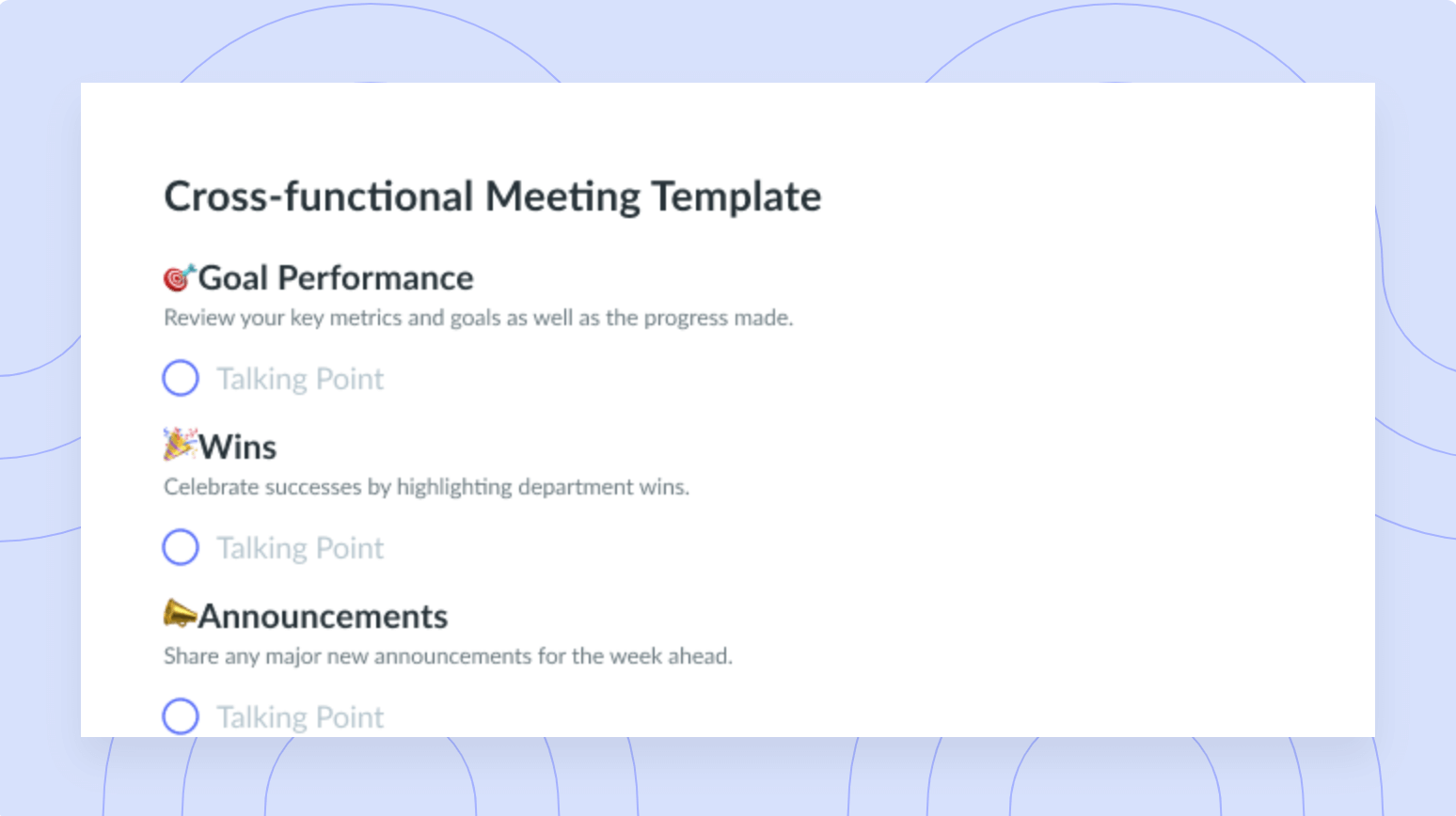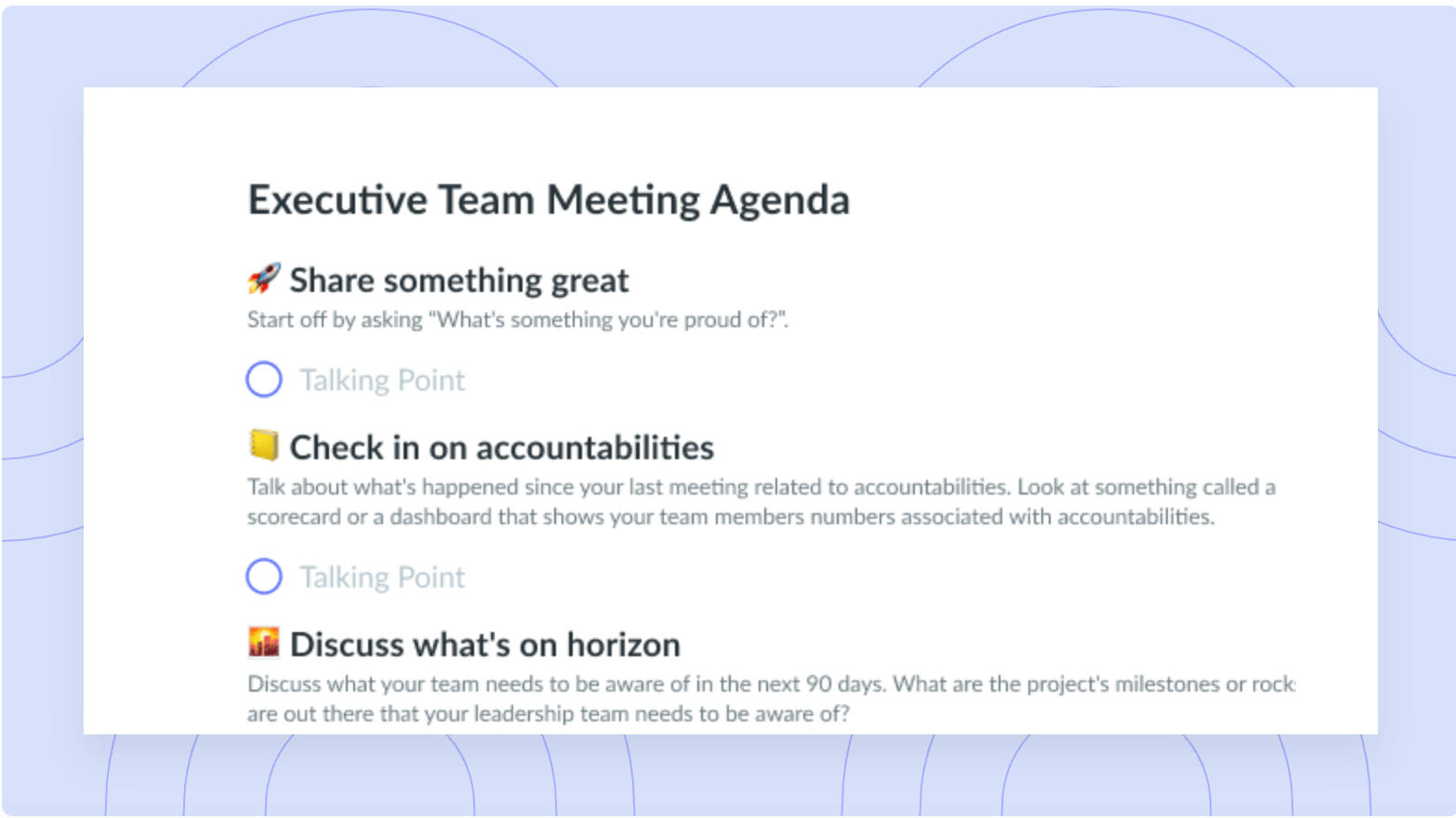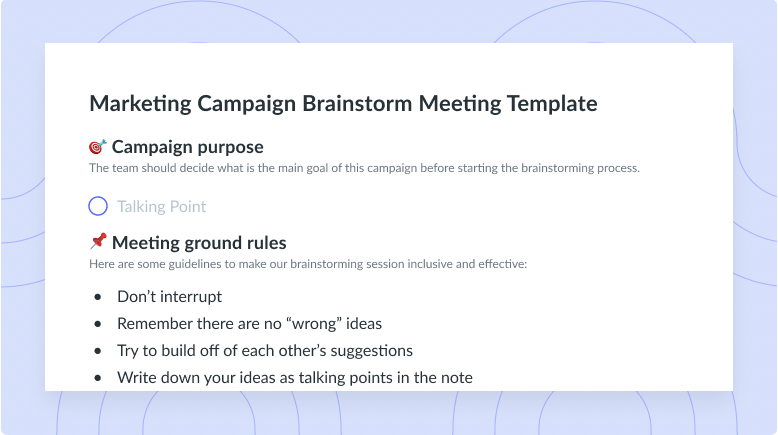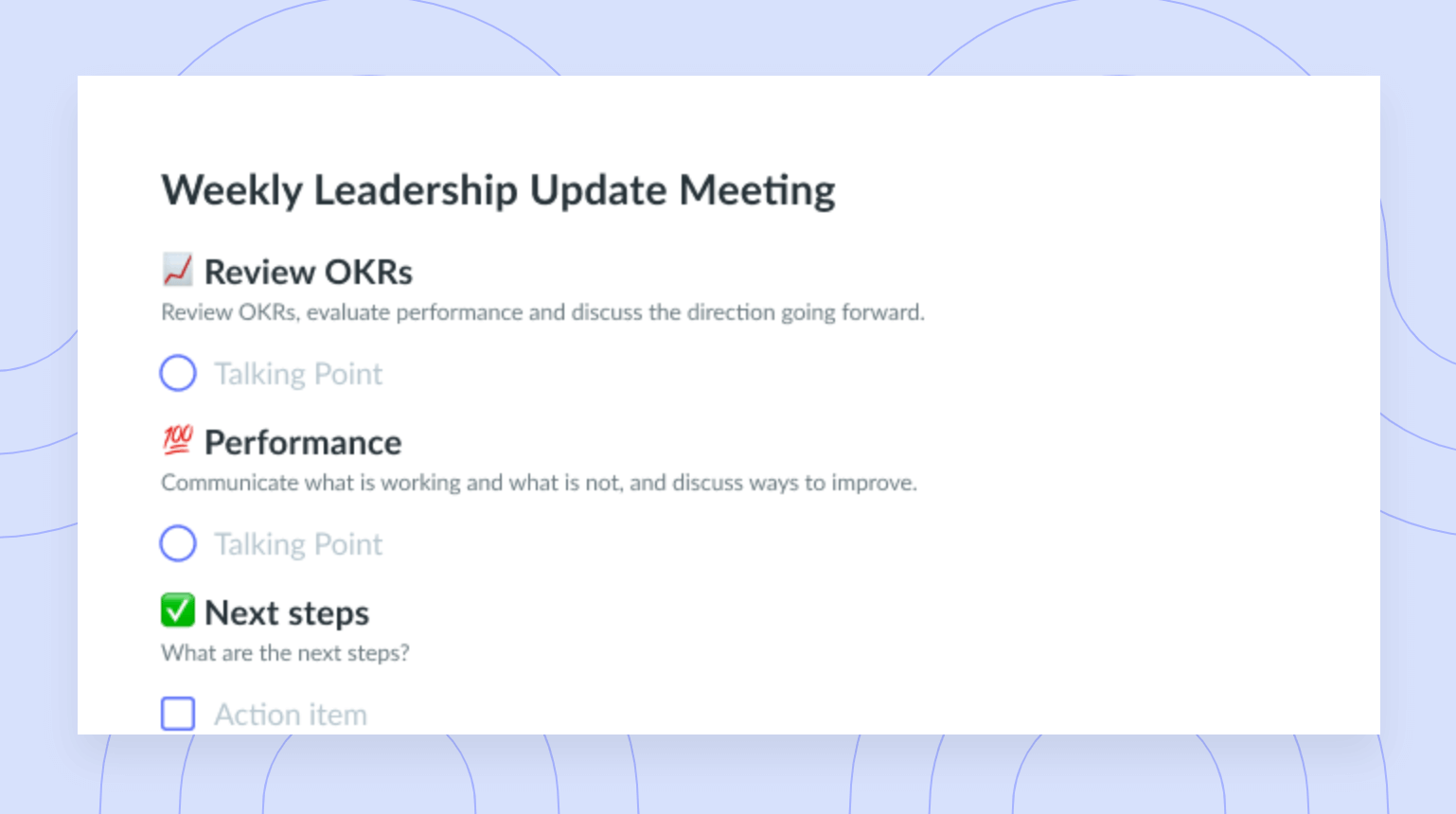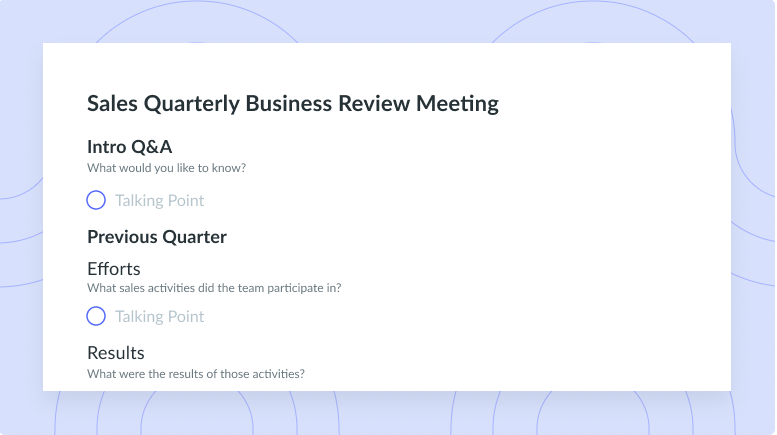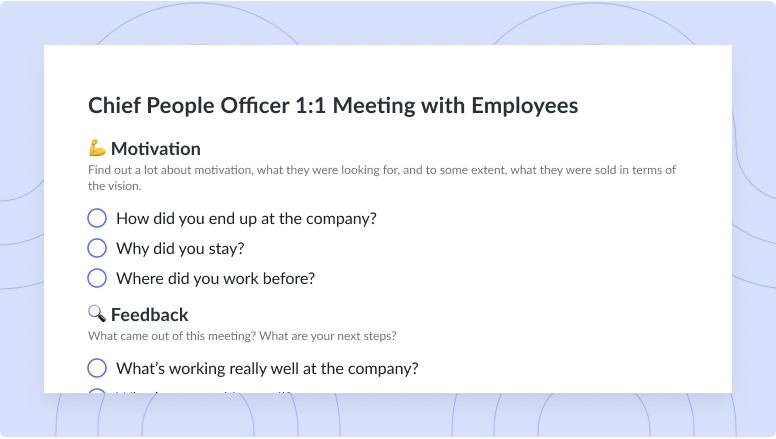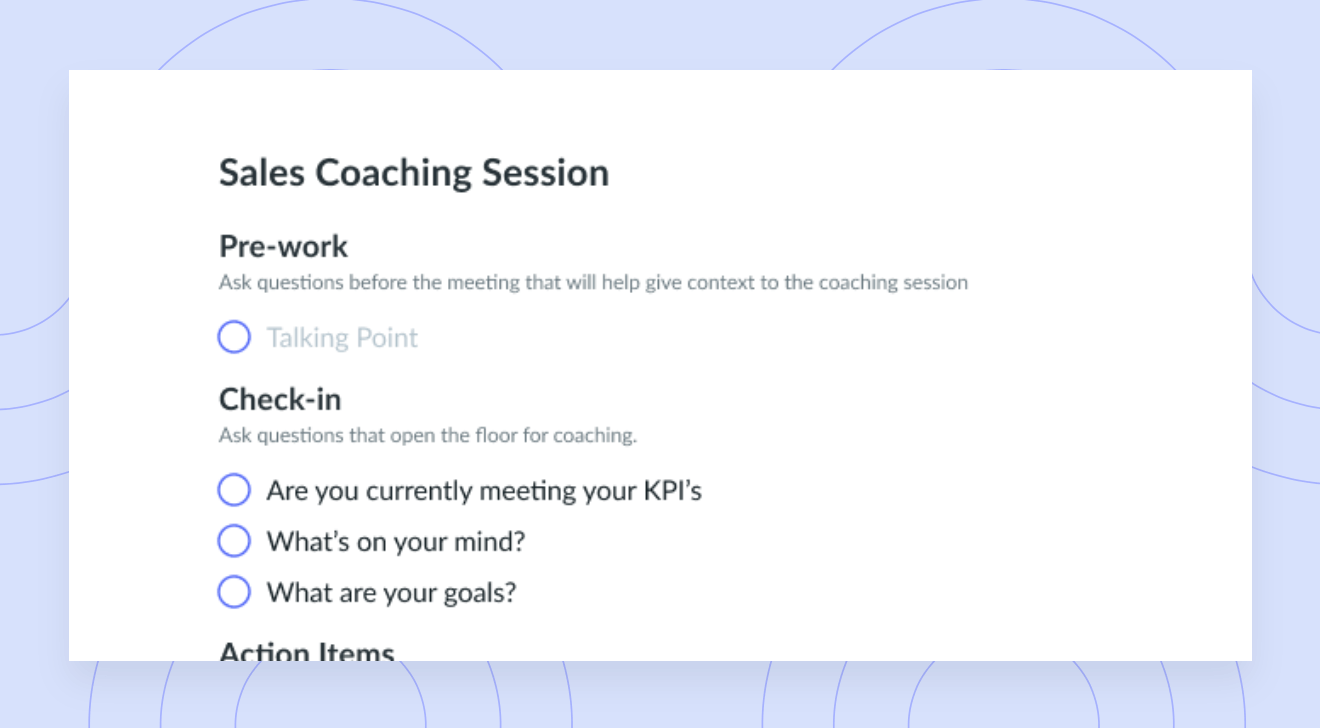Your Guide to Preparing High-Potential Employees for Leadership Positions
Take your organization to the next level by preparing your high-potential employees for leadership positions.
Developing new leaders is rated as the top talent challenge for more than 86 percent of companies worldwide. In fact, it’s one of the most important aspects of running a successful business. Without strong leaders, businesses can quickly become disorganized and fall apart.
While it’s easy to focus on the skills and experiences your high-potential candidates currently have, it doesn’t hurt to take a look at what will make them even more successful as leaders.
In this guide, we’ll cover what makes someone high-potential, the difference between high-potential and high-performance, examples of leadership skills and characteristics, and ways to prepare high-potential employees for leadership positions.
- What are high-potential employees?
- The difference between high-potential and high-performance
- Examples of leadership characteristics
- 8 ways to prepare employees for leadership
What are high-potential employees?
High-potential employees (HiPos) are employees who have the potential to be future leaders within your organization. They have the right combination of skills, experiences, and characteristics that make them ideal candidates for leadership positions.
Typically, they are high-performing, ambitious, coachable, adaptable, proactive, and communicative. While there is no one-size-fits-all definition of a HiPo, most companies use a combination of the following criteria to identify them.
- Performance: They consistently outperform their peers and meet or exceed expectations.
- Potential: They have the ability to grow and develop into leadership positions, as demonstrated through past behavior, like taking on new challenges or quickly learning new skills.
- Engagement: They are engaged with their work and have a positive attitude, which makes them more likely to stay with the company longer.
- Development: They are interested in personal and professional development opportunities.

Run efficient meetings, come to a decision, and get back to work
Level up your meeting habits to boost engagement and productivity with a collaborative meeting agenda. Try a tool like Fellow!

The difference between high-potential and high-performance
High performers, also called high-performance employees, are those who excel in their current roles. They meet or exceed expectations and contribute to the success of their team or department.
While high performance is important, it doesn’t necessarily mean that an employee has the potential to be a successful leader. To be considered high-potential, an employee also needs to have the right skills, experiences, and characteristics for a leadership role.
For example, an employee who is great at sales but doesn’t have any interest in management may not be a good fit for a leadership role. Similarly, a high performer might be excellent at problem-solving but lack the people skills needed to lead a team effectively.
On the other hand, high-potential employees are those who not only excel in their current roles but also have the potential to be successful leaders. In addition to meeting or exceeding expectations, they have the skills, experiences, and characteristics that make them ideal candidates for leadership positions.
Examples of leadership characteristics
When identifying high-potential employees, consider these six important skills and characteristics that all successful leaders share.
- Communication: Leaders need to be able to communicate effectively with their team. This includes being able to listen, provide feedback, and give clear instructions. An employee who can give clear and concise instructions is more likely to have a team that is productive and efficient.
- Decision-making: Leaders need to be able to make decisions quickly and efficiently. They should also be comfortable making difficult decisions that may not be popular with everyone. They should be able to justify these decisions based on data and logic to gain the authority and trust of their team.
- Emotional intelligence: Leaders need to be able to understand and control their emotions, as well as the emotions of others. They should be able to stay calm under pressure and handle difficult situations without losing their cool. This includes being able to handle conflict and provide support when needed.
- Motivation: Leaders need to be able to motivate and inspire their team members. This includes setting a clear vision for the team, providing feedback, and providing positive reinforcement to keep team morale high.
- Organizational skills: Leaders need to be able to organize their thoughts and ideas and keep track of multiple tasks and priorities at once. They should also be able to prioritize tasks and delegate responsibilities to lead a team that is both efficient and effective.
- Critical thinking: Leaders need to be able to think strategically. This includes being able to see the big picture, identify trends, and make long-term decisions. An employee who can think strategically is more likely to make decisions that are in the best interest of their team and the company.
8 ways to prepare employees for leadership
Many companies make the mistake of assuming that high performers will automatically make great leaders. However, leadership is a complex skill that requires specific skills, abilities, knowledge, and training.
Once you’ve identified the high-potential employees within your organization, it’s time to start preparing them for leadership positions. Here are a few things you can do to help them develop the skills they need to be successful leaders.
- Have a career conversation
- Create a professional development plan
- Implement coaching and mentoring
- Offer learning resources
- Have regular one-on-ones
- Define leadership skill gaps
- Provide stretch projects
- Give regular feedback
1Have a career conversation
It’s a good idea to have regular career conversations with your employees to discuss their goals and aspirations. This will help you get a better understanding of their long-term career plans and how they see themselves fitting into the company’s future.
Making it a point to have these conversations also shows your employees that you’re interested in their career development and willing to invest in their future. This way, you can ask your high-potential employees if taking on a leadership role is something they would be interested in.
2Create a professional development plan
Once you know what the career goals of your HiPos are, you can help them create a professional development plan. This plan should include both short- and long-term goals, as well as specific steps they can take to reach those goals.
For example, if an employee’s goal is to become a manager, their plan might include taking on additional responsibilities at work, enrolling in management courses, or shadowing a current manager.
Supporting your employees’ professional development shows that you’re dedicated to their growth and development, which sets them up for success in the future.
3Implement coaching and mentoring
Coaching can take many different forms, but the goal is always to help employees improve their performance and reach their potential. For example, your coaching program might include regular check-ins, mentorship, or job shadowing.
According to a study by Human Capital Institute, 51% of companies with a strong coaching culture outperform their industry peers in terms of revenue, and 62% of employees in these companies report being highly engaged in the workplace.
When done correctly, coaching can be an extremely effective way to develop your employees’ leadership skills. For that reason, it’s no surprise that when surveying HR professionals across North America, Together and Hr.com’s State of Coaching and Mentoring Report found that 72% strongly agree that mentoring and coaching leads to improved organizational performance.
4Offer learning resources
It’s important to provide your high-potential employees with learning resources—this can be anything from books and articles on leadership to mentoring programs for high potentials and online courses. There are also great podcasts on leadership, like the Supermanagers podcast, which features the best management tips and interviews to help you become an outstanding leader.
You can also encourage your employees to attend events, such as conferences or workshops, that will help them develop their leadership skills. If you have the budget, you can even provide learning and development allowances or send them to a leadership program.
5Have regular one-on-ones
Creating a space for regular, open communication is essential for any leader. This is especially true for new leaders who might be feeling a bit overwhelmed.
One-on-one meetings are a great way to check in with your employees and see how they’re doing. They’re also an opportunity for employees to voice any concerns or ask for help. As a leader, it’s important to create an environment where your team feels comfortable coming to you with problems.
If you have high-potential employees on your team, make sure to have regular one-on-ones using a powerful tool like Fellow. This will help you stay up to date on your employees’ progress and ensure that they’re on track to reach their goals.
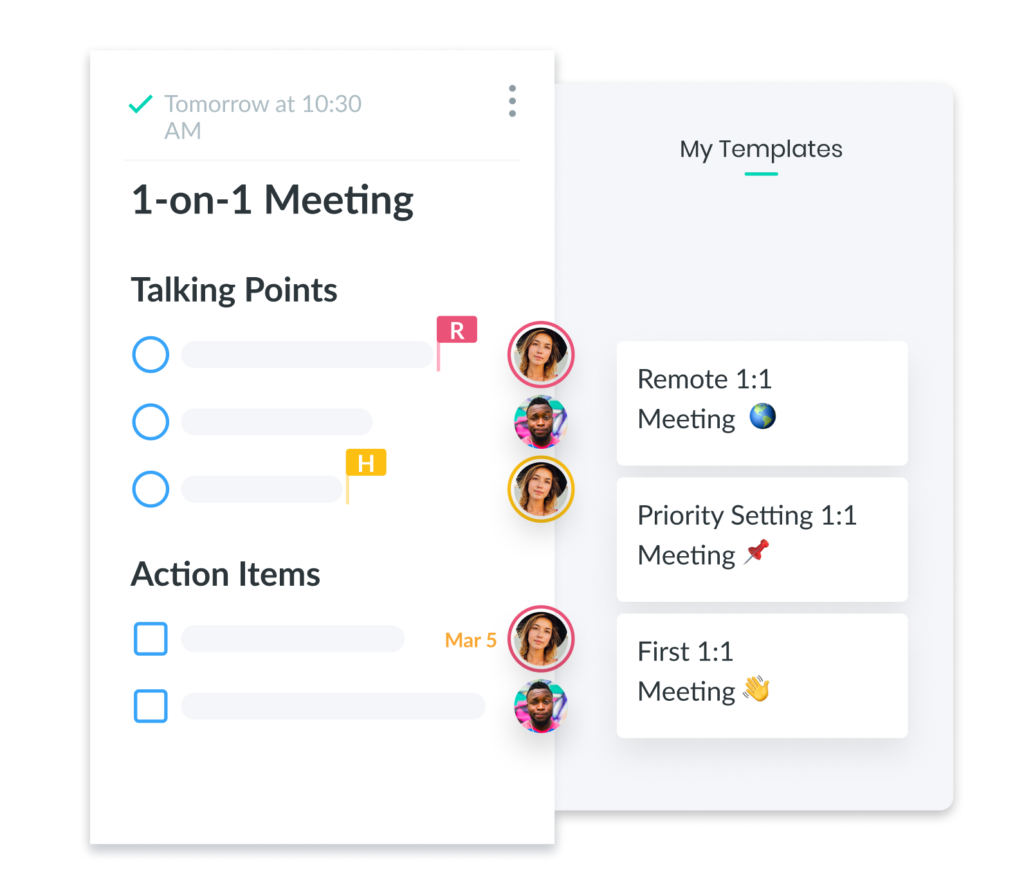
6Define leadership skill gaps
Leadership skill gaps can be difficult to identify, but there are a few ways to do so. One way is to compare your HiPos’ current skill sets with that of successful leaders in your company. You can also ask these leaders’ peers, subordinates, and superiors for feedback on their leadership abilities.
Once you’ve identified your employees’ skill gaps, you can help them close those gaps with specific HiPo development opportunities. For example, if they need to work on their communication skills, you might suggest they take a public speaking course.
7Provide stretch projects
High potentials are always looking for ways to challenge themselves. They’re not afraid of taking on new tasks or learning new things.
One way to prepare your employees for leadership is to give them stretch projects. These are assignments that are outside of their comfort zone but still within their skill set. For example, you might ask an employee who typically works on marketing campaigns to lead a team in developing a new product.
Stretch projects help employees develop new skills and grow in their current roles. These projects also give you a chance to see how your employees perform under pressure and handle challenging situations.
8Give regular feedback
Giving feedback is important for all employees, but it’s especially crucial for high-potential employees. This feedback should be specific, timely, and actionable. It’s also important to make sure that your feedback is balanced. In other words, don’t just focus on the negative—be sure to point out what they’re doing well, too.
Giving regular feedback shows that you’re invested in your employees’ development and want to help them grow. Fellow enables your team to share real-time feedback on meetings, projects, and performance.
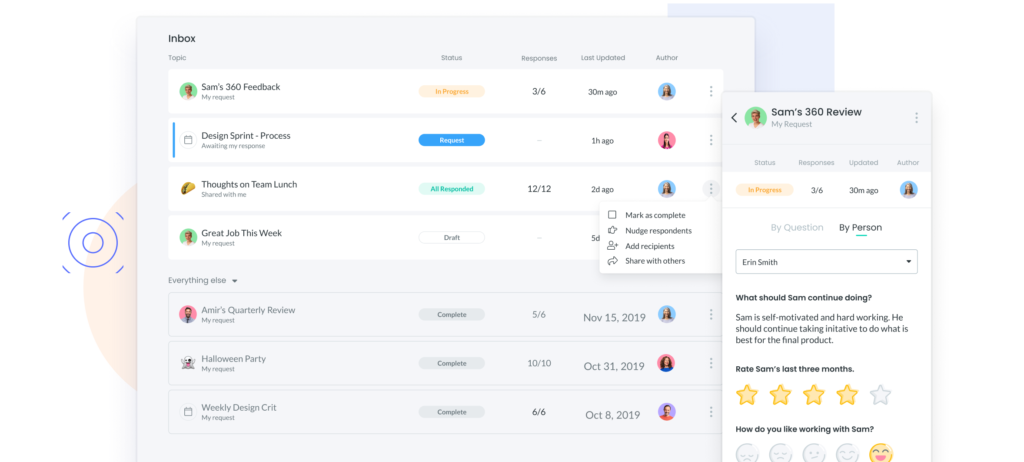
Parting advice
Training new leaders are essential for any business. Doing so can be simple and involve having regular career conversations and giving specific, timely, and actionable feedback, or it can be complex and involve developing a mentorship program and designing stretch projects, for example.
No matter what route you decide to take, remember that developing your high-potential employees into leaders requires time and patience. By taking the time to identify your high potentials and invest in their development, you can ensure that your company has a strong pipeline of future leaders.










